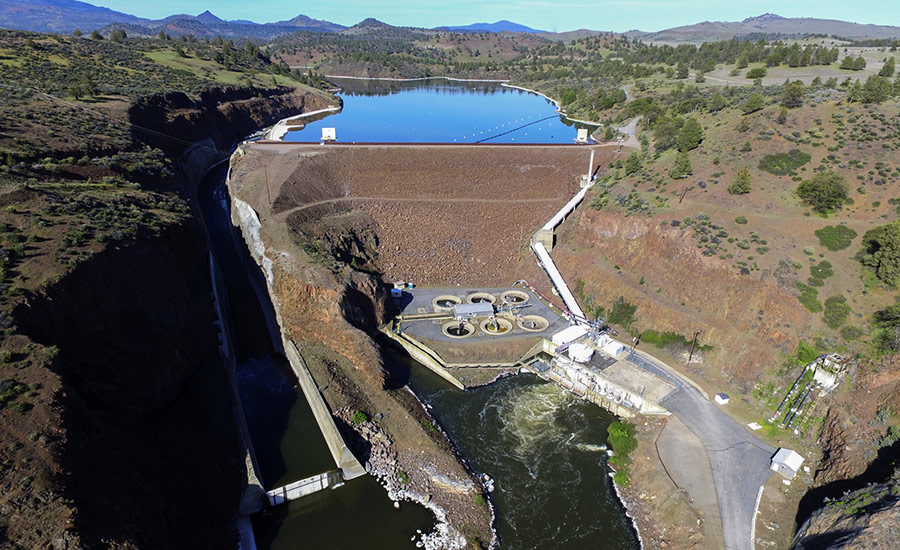
Image Source: Google
Dams have long been a symbol of human engineering prowess, providing us with water supply, hydropower, and flood control. However, as we learn more about the environmental impacts of dams on ecosystems and river systems, there is a growing movement towards dam removal or remediation to restore rivers to their natural state.
The transformation of a dammed river from a stagnant reservoir to a free-flowing waterway can have profound effects on the environment, opening up new opportunities for the best dam remediation wildlife, recreation, and community engagement.
The Environmental Benefits of Dam Remediation
Restoring Natural River Systems
- Removing dams allows rivers to flow freely, restoring natural sediment transport and nutrient cycling.
- Reconnecting fragmented habitats helps fish and other aquatic species migrate, spawn, and thrive.
Improving Water Quality
- Without dams, water quality can improve as sediment and pollutants are flushed downstream.
- Increased oxygen levels in the water can support a greater diversity of aquatic life.
Enhancing Biodiversity
- By restoring river habitats, dam remediation can lead to the recovery of endangered species and the return of native plants and animals.
- Increased biodiversity can strengthen ecosystem resilience and adaptability to climate change.
The Social and Economic Benefits of Dam Remediation
Recreational Opportunities
- Free-flowing rivers provide opportunities for fishing, kayaking, rafting, and other water-based activities.
- Scenic rivers attract tourists and outdoor enthusiasts, boosting local economies through recreation and ecotourism.
Community Engagement
- Dam removal projects often involve community input and collaboration, fostering a sense of stewardship and connection to the natural environment.
- Educational programs and volunteer opportunities related to dam remediation can raise awareness about river health and conservation.
Flood Mitigation
- Restoring natural river processes can help reduce the risk of flooding downstream by allowing rivers to absorb and release water more effectively.
- Healthy river ecosystems can act as natural buffers against extreme weather events and provide valuable floodplain habitats.
Case Study: The Elwha River Restoration Project
Background
- The Elwha River on the Olympic Peninsula in Washington State was dammed in the early 20th century for hydropower.
- In 2011, the removal of two dams, the Elwha Dam and Glines Canyon Dam, began as part of the largest dam removal project in U.S. history.
Environmental Impact
- Within years of dam removal, salmon populations in the river rebounded, benefiting both wildlife and local indigenous communities.
- Restored river habitats have seen the return of a diverse array of plant and animal species, enhancing biodiversity in the region.
Social and Economic Benefits
- The restoration of the Elwha River has revitalized local tourism, attracting visitors interested in witnessing the transformation of the landscape.
- Recreational opportunities such as fishing and whitewater rafting have expanded, providing economic benefits to the surrounding communities.
Looking Ahead: The Future of Dam Remediation
Collaborative Efforts
- Government agencies, environmental organizations, and local communities are working together to prioritize dam removal projects based on environmental and social benefits.
- Funding opportunities and grants are available to support the restoration of rivers and the removal of obsolete dams.
Technological Innovations
- New technologies for sediment management and fish passage are being developed to address challenges associated with dam removal projects.
- Monitoring and evaluation tools help assess the success of dam remediation efforts and guide future restoration projects.
Policy and Advocacy
- Advocacy groups are working to promote policies that prioritize river health and ecosystem restoration over outdated dam infrastructure.
- Legislation supporting dam removal and river restoration efforts is gaining traction at the local, state, and federal levels.
In conclusion, the transformative power of dam remediation goes beyond restoring rivers to their natural state. It opens up new possibilities for environmental conservation, recreational enjoyment, and community engagement. By recognizing the importance of healthy river ecosystems and investing in the removal of obsolete dams, we can create a sustainable future where both nature and society can thrive.
